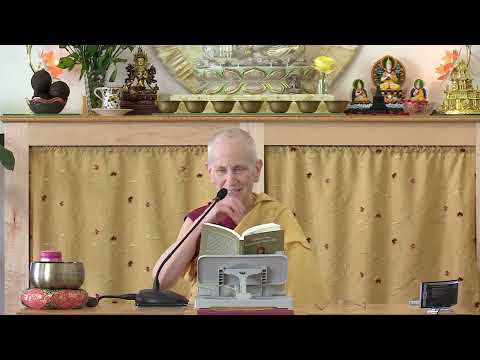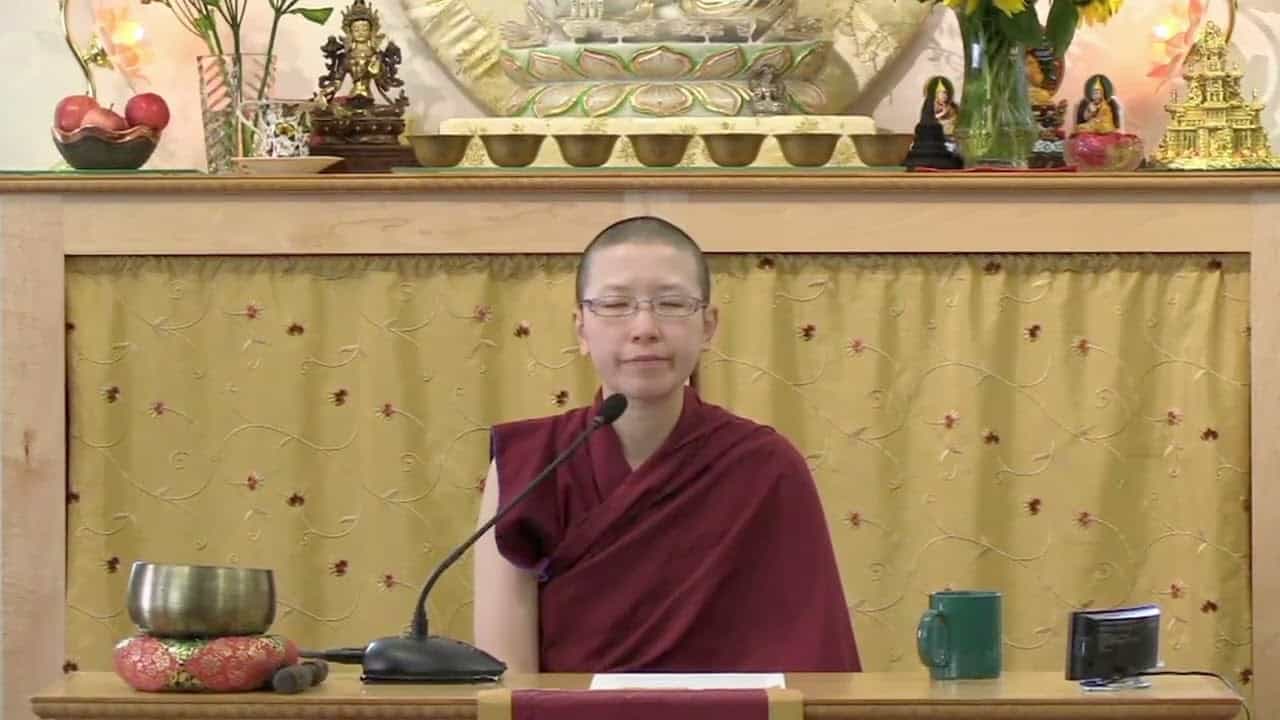Nirvana as the object of meditation
82 Samsara, Nirvana, and Buddha Nature
Part of an ongoing series of teachings (retreat and Friday) based on the book Samsara, Nirvana, and Buddha Nature, the third volume in The Library of Wisdom and Compassion series by His Holiness the Dalai Lama and Venerable Thubten Chodron.
- Not arising, not ceasing, not changing while existing
- Free from craving and views
- Different from four elements and four formless states
- Unborn, unbecome, unmade, unfabricated
- Nirvana is different from total nonexistence
- Object of supramundane path
- Three aspects of nirvana
- State free from conditioned existence
- Refutations of wrong views about nirvana
- Differences and similarities between Pali and Sanskrit traditions
Samsara, Nirvana, and Buddha Nature 82: Nirvana As The Object Of Meditation (download)
Contemplation points
- What are the three characteristics of nirvana according to the Pali tradition? Venerable Chodron said that we normally think of happiness as something that has been conditioned. However, nirvana is a negation. Spend some time considering this. Why is it that something permanent is what brings about true and lasting happiness?
- How is the cessation of dukkha different from the theistic idea of heaven?
- Emptiness is the lack of inherent existence, not nothingness. Why is it so vital to understand this? Why is it that because things exist, nirvana is possible? Work through the reasoning in your own words.
- What is the proof that nirvana exists? Why is it that ordinary beings cannot perceive it?
- Although nirvana brings about the destruction of craving it is not the destruction of craving. Why can nirvana not be the destruction of craving?
- Contemplate both viewpoints of the term nirvana – that it is both the goal and the object of meditation. How is it that these are not contradictory? Why is thinking about nirvana in both of these ways beneficial for our understanding?
Venerable Thubten Chodron
Venerable Chodron emphasizes the practical application of Buddha’s teachings in our daily lives and is especially skilled at explaining them in ways easily understood and practiced by Westerners. She is well known for her warm, humorous, and lucid teachings. She was ordained as a Buddhist nun in 1977 by Kyabje Ling Rinpoche in Dharamsala, India, and in 1986 she received bhikshuni (full) ordination in Taiwan. Read her full bio.


